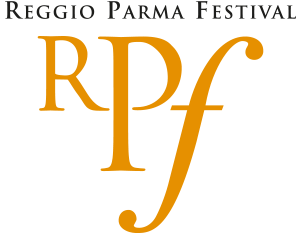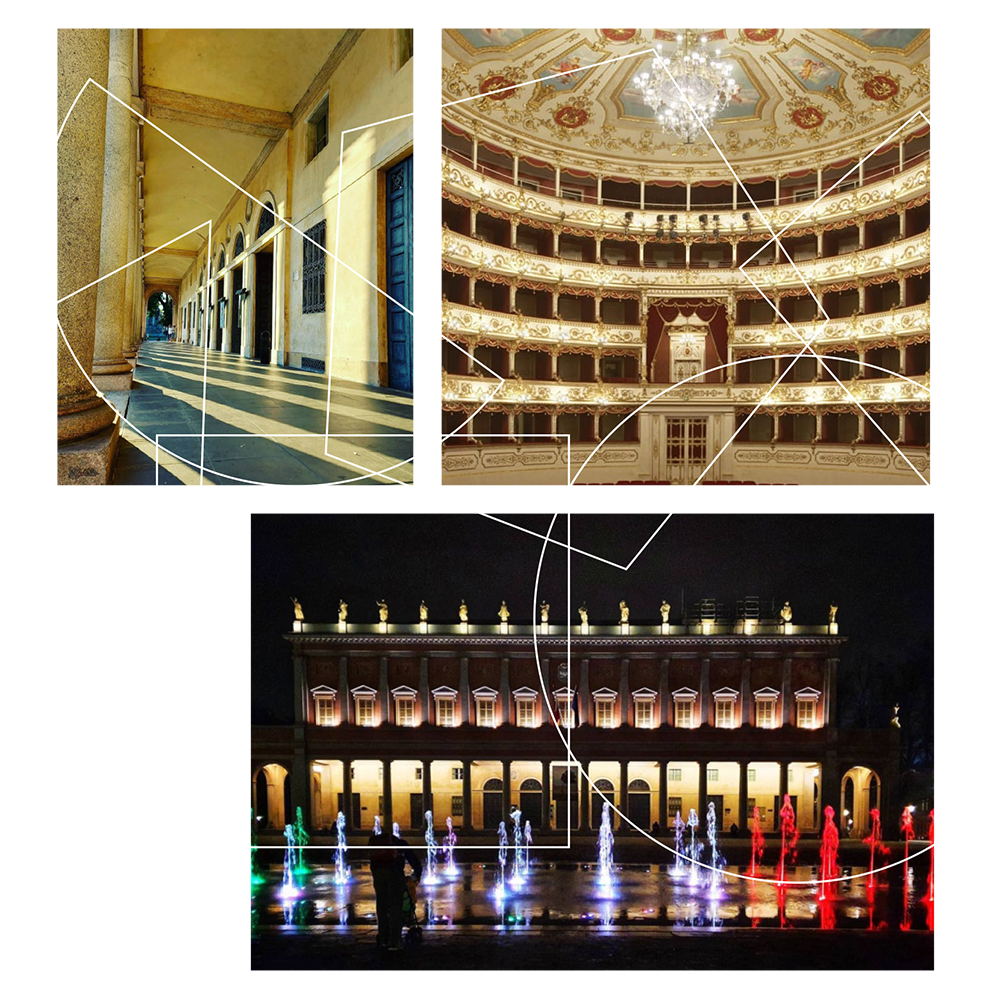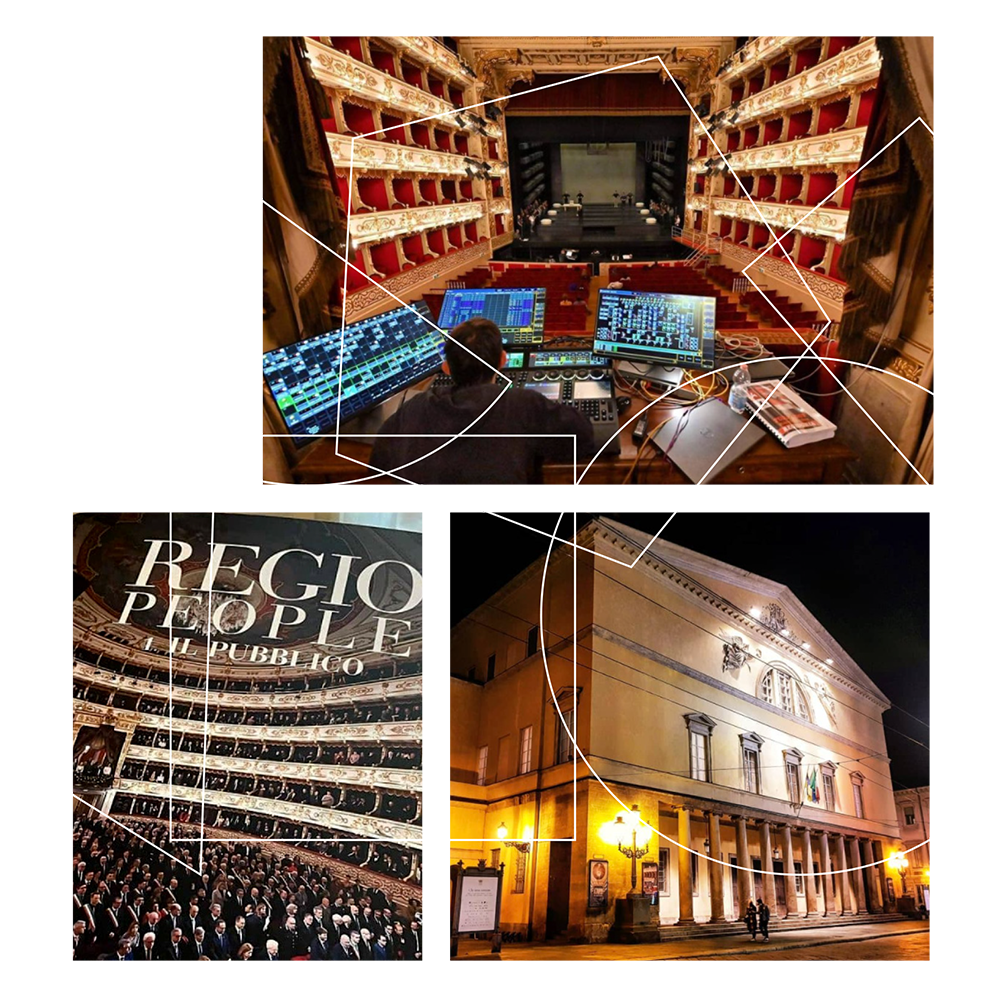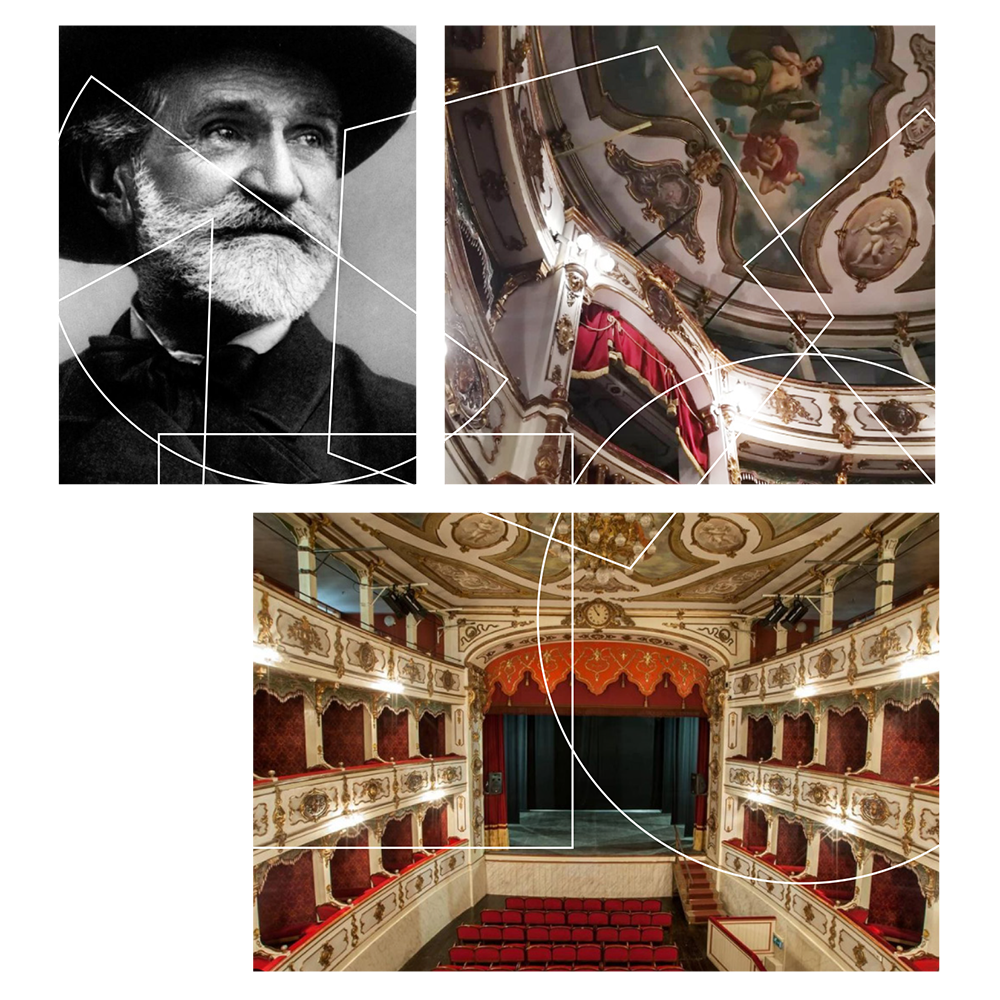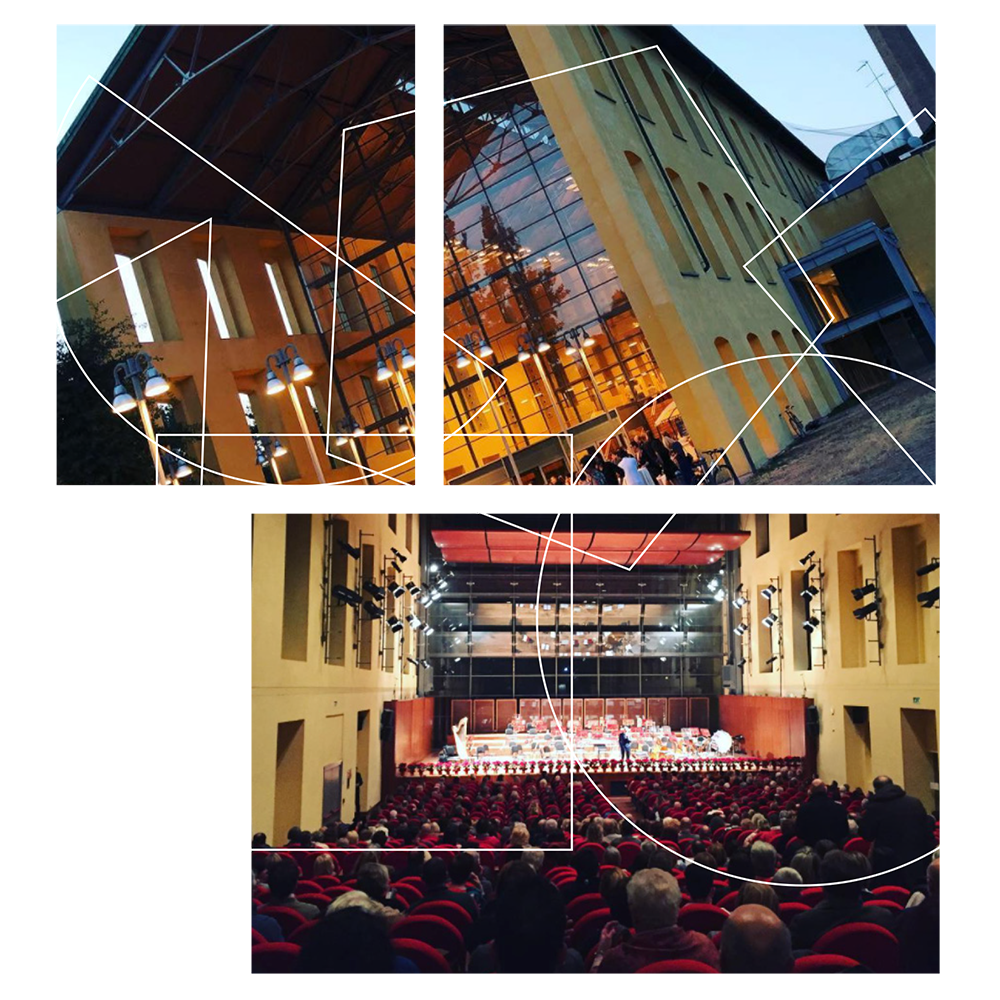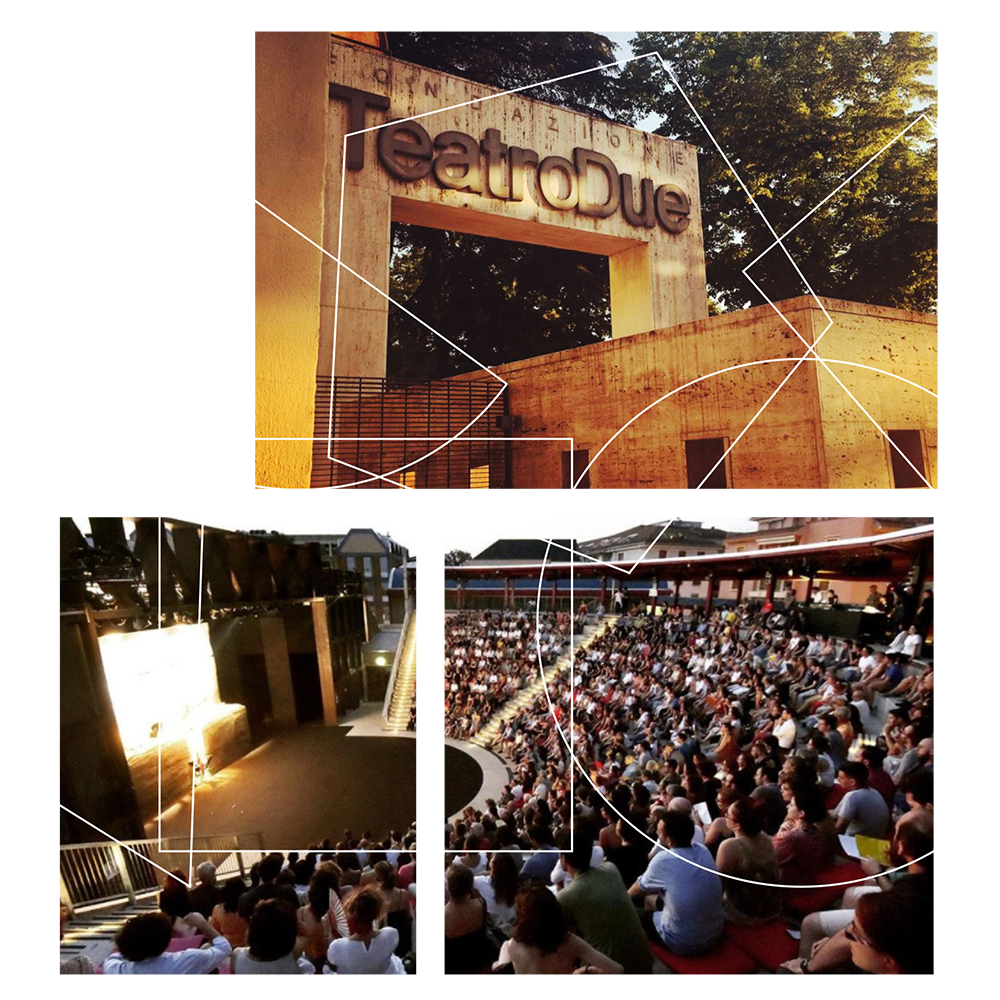It has been the symbol of the city of Reggio Emilia since it was built in 1857, together with the Room of the Tricolor. The mayor Carlo Ritorni and the architect Cesare Costa, in charge of the project, had the idea of making the theatre a monument of the city. An isolated and grandiose building, at the heart of the city centre. The operation succeeded perfectly in just five years, the time it took from design to inauguration. Born as an opera house, the Municipal Theatre immediately showed its vocation to become the engine of the city’s cultural life. This inclination was consolidated after 1957, on the centenary of its inauguration, when the Municipal Administration took over direct management of the theatre. In its 3.890 square metres the Municipal Theatre has hosted and produced the best of international entertainment: opera, prose, concerts, dance and exhibitions.
The theatres
The three Festivals take place in prestigious locations in the cities of Reggio Emilia and Parma. Each space tells a story of vitality and culture, a symbol of the territories to which it belongs. Each event is manifested through different art forms, sometimes connected to each other, creating a unicum of inestimable value.
Festival Aperto Red Rec
ARIOSTO THEATRE
The Ariosto Theatre hosts most of the prose productions of the Season of the Theatres of Reggio Emilia. It stands on the site of the former Cittadella Theatre, built between 1740 and 1741 to a design by Antonio Cugini and destroyed by fire in 1851. The Ariosto Theatre was built in 1878 by a private company which, in response to the requests of a large part of the townspeople, set about building a “Poly theatre” (i.e. a theatre serving both drama and equestrian companies). Following the London and Parisian models taken up by all Italian “Poly theatres”, the Ariosto had cast-iron structures; the cavea took on a semi- circular form, the theory of the boxes, maintained for the second tier, was replaced on the first and third tiers by single galleries. In 1927 the mystic gulf for the orchestra was added and the structures necessary for equestrian performances were removed. On the same occasion the theatre was decorated ex novo by Anselmo Govi with late-liberty style frescoes: the ones on the dome are particularly interesting, depicting episodes from Orlando Furioso surrounded by a band in which the opening lines of Ariosto’s poem are quoted. In 1981 the theatre underwent a series of restoration works: cleaning, demolition of unsafe areas, reinforcement or reconstruction of the floors (first and foremost the stage floor), laying of new floors, etc. The capacity of the Ariosto Theatre is 780 seats.
Festival Verdi
ROYAL THEATRE
The Royal Theatre, considered one of the most prestigious and well-known theatres in the world, was inaugurated in 1829 with Zaira, a new opera specially written for that occasion by Vincenzo Bellini. Its construction, commissioned by Duchess Maria Luigia, was entrusted to the architect Nicola Bettòli. The construction lasted eight years and at the inauguration the work was proportionate and imposing. The dimensions of the theatre are in fact remarkable: 84 metres long, 37, 50 metres wide and almost 30 metres high. Its maximum capacity is about 1.400 spectators. Unchanged since its inauguration is the Triumph of Pallas or Triumph of Wisdom, a curtain painted in tempera by Borghesi, considered one of the most beautiful in the world. The work depicts Maria Luigia (in the guise of Pallas or Minerva) seated on a throne. The curtain shines with its original beauty thanks to a major restoration completed in 1999. Today, the Royal Theatre combines the splendour of the historic building with an extraordinary technologically advanced organisation that makes it one of the most efficient theatrical machines, also following the complex restoration, renovation and static consolidation works, including the stage area, carried out on the occasion of the 2001 National Celebrations for the centenary of the death of Maestro Giuseppe Verdi. The Royal Theatre, which hosts and produces opera, dance and concert performances, is counted among the “temples of melodrama” and is home to the Verdi Festival.
GIUSEPPE VERDI THEATRE
The Giuseppe Verdi Theatre of Busseto is located inside the 13th century Pallavicino Fortress, where Verdi performed in a pre-existing theatre in his youth, conducting the Symphony of the Barber of Seville. The appearance it gives its audience today is the one that architect Pier Luigi Montecchini designed in the mid-19th century. It was inaugurated on 15 August 1868 with two operas by Verdi: A Masked Ball and Rigoletto. To honour the Maestro, all the ladies wore green, while the men were asked to wear only a tie of the same colour. Giuseppe Verdi did not take part in the evening because he was against the construction from the beginning, considering the new theatre “too expensive and useless in the future”. The theatre has recently been restored, brought up to standard and reopened; its capacity is 300 people. Inside, there is a bust of Giuseppe Verdi by sculptor Giovanni Duprè and frescoes by Gioacchino Levi, who painted allegorical figures of Comedy, Tragedy, Melodrama and Romantic Drama. In January 2001, on the occasion of the centenary of the Maestro’s death, Aida was performed, with stage design by Franco Zeffirelli, and Falstaff, Verdi’s last opera, was conducted for the occasion by Riccardo Muti, with the Chorus and Orchestra of the La Scala Theatre in Milan.
AUDITORIUM PAGANINI
The Niccolò Paganini Auditorium is located in the former Eridania sugar factory, built in 1899 and decommissioned in 1968. It represents the most important intervention in the redesign of one of the most important industrial areas of the city in the first decades of the 20th century, where the first factories (Public Slaughterhouse, Agrarian Consortium,
Eridania Sugar Factory, Barilla Pasta Factory) and the great technological services of the time (Railway Station, Gasometer) were concentrated. The project, designed by architect Renzo Piano, aims to redevelop the existing structures by preserving the most significant architecture and inserting different functions of urban and territorial relevance. The Auditorium consists of 780 seats, foyer, dressing rooms, bar, offices, cloakroom, and technical rooms. Services and rehearsal rooms are located in the eastern appendix of the building. The structure is equipped with sophisticated technological and acoustic systems to ensure maximum functionality. The project involved the demolition of the two ends of the former factory to obtain a sort of visual ‘telescope’ inside, with large windows delimiting the spaces of the foyer and the music room. The building enhances the value of the large existing park, the botanical parts of which have been restored and equipped with new lighting, and strengthens the city’s system of theatres and cultural centres with a structure of great aesthetic and functional value, making Parma one of the best equipped Italian cities in terms of music. The Paganini Auditorium is the result of the decision of the Municipal Administration of Parma to invest in the construction of new cultural facilities, and in the restoration of existing ones, as a driving force for the further cultural and economic success of the city in Italy and abroad.
Teatro Festival Parma
DUE THEATRE
It is practically impossible to separate the history of this theatre building from the evolution of the aesthetics and the production and artistic choices made by the ensemble that founded it. Built in 1902, the building became a theatre towards the end of the 1970s with the arrival of the Compagnia del Collettivo. From then until today, through different phases of renovation in correspondence with the different needs, the building has been transformed into a real theatre factory, where it is possible to operate in the numerous spaces at the same time. In this way, the possibilities of work and artistic verification, as well as of attendance and diversification of the public have been enlarged for a city like Parma which, with its 180.000 inhabitants, is obliged to work on the function of the spectator and not only on the theatrical event. Year after year, therefore, a mobile structure has been created, with four distinct performance spaces of different sizes (from a minimum capacity of 80 seats to a maximum of 500), to make the needs of the spectators compatible with those of the spaces and artists and to make an open theatre work, which is both a school and a performance venue, from three in the afternoon to two at night. The Fondazione Teatro Due – Stable Theatre of Parma – home of the Parma Theatre Festival, has always been a reference point for Italian and international artists and has been promoting the city of Parma’s prose season since 1986.
Since 2017, The Arena Shakespeare has been inaugurated on the occasion of the first summer festival, an outdoor space that allows the Foundation to expand and diversify its cultural proposals. The semicircular steps of the cavea facing the stage allow the public to enjoy musical performances, ballets, concerts and readings in the cool of the summer evenings. The capacity is 700 seats.
